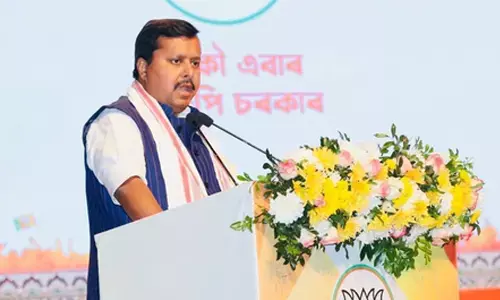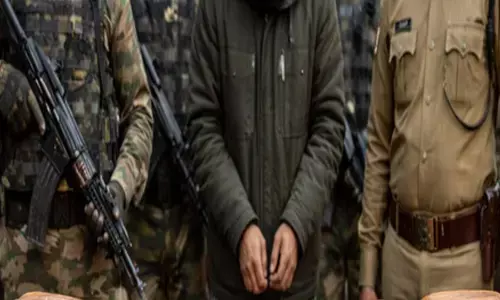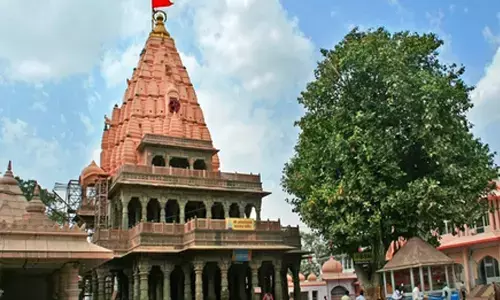Understanding the mobilisation of resources from banking

Types of Banks, RBI classify banks as:Commercial Banks refer to both scheduled and non-scheduled commercial banks which are regulated under Banking Regulation Act, 1949. State Bank of India and its Associates, Other Nationalized Banks, Foreign Banks,
Types of Banks
RBI classify banks as –
Commercial Banks refer to both scheduled and non-scheduled commercial banks which are regulated under Banking Regulation Act, 1949.
1. Scheduled Commercial Banks are grouped under following categories:
(Those banks which are included under second schedule of RBI act of 1934 and whose paid up capital and funds collected are not less than Rs. 5 Lakh. Further, they must not involve themselves in any activity which adversely affects interests of depositors.)
- State Bank of India and its Associates
- Other Nationalized Banks
- Foreign Banks
- Foreign banks can either open their branch in India, or they can open wholly owned subsidiary (WOS). WOS is a company in which 100% shares are held by parent company. RBI as per current policy is promoting WOS route.
- This is because of apprehensions of western financial crisis. Branch office remains more dependent and under control of head office, whereas WOS enjoys much autonomy and is to some extent more immune from any problems of parent company or home country.
- In case of branch 75% FDI is allowed and in case of WOS 100% FDI is allowed. WOS also receives near national treatment. They are allowed to open branches anywhere in India (except certain sensitive areas).
- There were concerns that too much reliance on foreign banks can compromise long term security and sovereignty of India, to address these it is provided that capital and reserves in hand of foreign companies shall not go beyond 20% of capital and reserves of national banking system.
Regional Rural Banks (RRB)
- RRBs were established in 1975 with a view to develop the rural economy and to create a supplementary channel to the ‘Cooperative Credit Structure’ with a view to enlarge institutional credit for the rural and agriculture sector.
- RRBs have to be sponsored by some Commercial Bank.
- The Government of India, the concerned State Government and the bank, which had sponsored the RRB contributed to the share capital of RRBs in the proportion of 50%, 15% and 35%, respectively. The area of operation of the RRBs is limited to notify few districts in a State.
- The RRBs mobilize deposits primarily from rural/semi-urban areas and provide loans and advances mostly to small and marginal farmers, agricultural laborers, rural artisans and other segments of priority sector.
Other Scheduled Commercial Banks (also known as Private Banks)
- Some banks escaped nationalization derives of pre 1990’s and they continued to operate as private banks for eg. ING vyasya or Jammu & Kashmir Bank. After LPG reforms, new bank licenses were granted in pursuance of Banking Law amended in 1993, this time very competitive banks such as HDFC, ICICI, AXIS bank, kotak Mahindra etc.
- In latest round ‘in principle’ license is granted to IDFC and Bandhan bank.
- The “in-principle” approval granted will be valid for a period of 18 months during which the applicants have to comply with the requirements under the Guidelines and fulfil the other conditions as may be stipulated by the RBI.
- On being satisfied that the applicants have complied with the requisite conditions laid down by the RBI as part of “in-principle” approval, they would be considered for grant of a license for commencement of banking business under Banking Regulation Act, 1949. Until a regular licence is issued, the applicants would be barred from doing banking business.
Non-Scheduled Commercial Banks
- Banks not included under second schedule of RBI act 1934. These banks require maintaining statutory cash reserve requirement. But they are not required to keep them with the RBI; they may keep these balances with themselves. They are not entitled to borrow from the RBI for normal banking purposes, though they may approach the RBI for accommodation under abnormal circumstances.
Cooperative Banks
- A co-operative bank is a financial entity which belongs to its members, who are at the same time the owners and the customers of their bank.
- This is western concept which came in In beginning of 1900’s. Initial capital of these banks is contributed by RBI, state and Central government in different rations. Cooperative banks operate on principle of no profit and no loss. So they are instrumental in dismantling hegemony of money lenders in rural finance.
- Cooperative banks constituted about 80% of institutional credit in 1960’s when nationalization drive was yet to start. But after nationalization they face stiff competition from commercial banks and their share has gone down substantially. Cooperative banks can scheduled or non-scheduled.
- As initial investment comes from RBI and government, these banks suffer high degree of outside interference. Cooperative banks in India are not cooperative in spirit. There is need to promote banks in which ownership and management is actually in hand of people. This if supported by policy makers will led to mushrooming of cooperative banks in far flung areas, purely on base of local demand and supply. It is well known that our rural areas are generally self-sufficient, and it is intervention of outside markets which results in distortions.
- There are different types of cooperative banks such as Primary Agriculture Credit Societies (PACS), State or centre land development banks (SLDB/CLDB) , Urban or rural Cooperative Banks (UCB/RCB).
- Rural cooperatives structure (under super vision of NABARD) is bifurcated into short-term and long-term structure. The short-term cooperative structure is a three-tier structure with State Cooperative Banks (SCBs) at the apex (State) level, District Central Cooperative Banks (DCCBs) at the intermediate (district) level and Primary Agricultural Credit Societies (PACS) at the ground (village) level. The short term structure caters primarily to the various short / medium-term production and marketing credit needs for agriculture.
- Similarly, long-term cooperative structure has the State Cooperative Agriculture and Rural Development Banks at the apex level and the Primary Cooperative Agriculture and Rural Development Banks at the district or block level. These institutions were conceived with the objective of meeting long-term credit needs in agriculture.
- There are currently around 93000 cooperative banks, among them huge majority is of PACS. This collectively forms backbone of rural banking system.
Post Offices as Financial Intermediary
- India Post is undoubtedly oldest and largest organization in India involved in resource mobilization. It has huge network of 1.55 lakh post offices, about 2.5 lakh dak sevaks (postmen) and 5 lakh employees.
- Among these 90% are operating in rural areas. With advent of other modes of communication, importance of India Post as foundation of Indian communication network has collapsed.
- But it remains quite relevant for wide array of ‘financial services’ it provides such as saving and other time deposit accounts, Public provident fund, Monthly Investment schemes, National saving certificates. (But it can’t provide current accounts)
- It comes to rescue government when banking system is not able to deliver cash benefits such as under NREGA, Old age/Widow/disability Pension Schemes etc. In fact, India post applied for banking licence this year, but RBI deferred application saying that India Post should separately consult government (finance Ministry) for the purpose.
- But given its deep penetration in rural India, there is strong case for its full-fledged foray into banking. It is said that organization holds around Rs 4 lakhs of Deposits and Rs 6 lakh saving certificates. But these deposits get interest rate as low as 4%.
Role and functions of Reserve Bank of India
- In 1926, Hilton-Young Commission – recommended the creation of a central bank for India to separate the control of currency and credit from the Government and to augment banking facilities throughout the country.
- The Reserve Bank of India Act of 1934 established the Reserve Bank and set in motion a series of actions culminating in the start of operations in 1935.
- Since then, the Reserve Bank’s role and functions have undergone numerous changes, as the nature of the Indian economy and financial sector changed.
The functions of the Reserve Bank today can be categorized as follows:
Monetary policy
- The objectives of monetary policy in India have evolved to include maintaining price stability, ensuring adequate flow of credit to productive sectors of the economy for supporting economic growth, and achieving financial stability.
- The Governor of the Reserve Bank announces the Monetary Policy in April every year for the financial year that ends in the following March. This is followed by bi monthly policy reviews in which overall macroeconomic stability is sought to be ensured by tinkering with means such as CRR, SLR, and MSF etc. Year 2014, saw major changes in monetary policy. Earlier there was review every 45 days, it was increased to 60 days so that impact of changes in policy is clearly visible and need for further actions could be properly gauged.
- Further, Urjit Patel Committee recommended use of ‘Inflation targeting’ for purpose of monetary policy, instead of previous ‘multiple indicators’ regime. (More on this later) So now RBI’s monetary policy is solely based to target Inflation in the economy.
Regulation and supervision of the banking and non-banking financial institutions.
- Traditionally, the Reserve Bank’s regulatory and supervisory policy initiatives are aimed at protection of the depositors’ interests, orderly development and conduct of banking operations, and liquidity and solvency of banks. Efficiency of RBI’s regulation and supervision is attested by the fact that Indian banking system almost remained untouched by recent global banking crisis.
- Regulation of money, forex and government securities markets and also certain financial derivatives. It interacts with other institutions like SEBI and FMC and some time comes into conflict with them.
- Banker, Debt and cash management for Central and State Governments
- The Reserve Bank of India Act, 1934 requires the Central Government to entrust the Reserve Bank with all its money, remittance, exchange and banking transactions in India and the management of its public debt.
- The Reserve Bank may also, by agreement, act as the banker to a State Government. Currently, the Reserve Bank acts as banker to all the State Governments in India, except Jammu & Kashmir and Sikkim. It has limited agreements for the management of the public debt of these two State Governments.
Management of foreign exchange reserves
- The Reserve Bank, as the custodian of the country’s foreign exchange reserves, is vested with the responsibility of managing their investment. In recent years flow and volatility of forex reserves have increased substantially and this has made RBI job to preserve ‘real value’ of reserves highly sophisticated.
Where our Forex reserves are invested?
The Reserve Bank of India Act permits the Reserve Bank to invest the reserves in the following types of instruments:
- Deposits with Bank for International Settlements and other central banks
- Deposits with foreign commercial banks
- Debt instruments representing sovereign or sovereign-guaranteed liability of not more than 10 years of residual maturity
- Other instruments and institutions as approved by the Central Board of the Reserve Bank in accordance with the provisions of the Act
Certain types of derivatives
- The Reserve Bank’s approach to foreign exchange reserves management has also undergone a change. Until the balance of payments crisis of 1991, India’s approach to foreign exchange reserves was essentially aimed at maintaining an appropriate import cover.
- The committee stressed the need to maintain sufficient reserves to meet all external payment obligations, ensure a reasonable level of confidence in the international community about India’s capacity to honor its obligations, and counter speculative tendencies in the market.
- After the introduction of system of market-determined exchange rates in 1993, the objective of smoothening out the volatility in the exchange rates assumed importance. It was in this backdrop that foreign Exchange Management act was repealing regulation act which was much stringent.
- Banker to banks – Banks are required to maintain a portion of their demand and time liabilities as cash reserves with the Reserve Bank, thus necessitating a need for maintaining accounts with the Bank. It also acts as banker of last resort.
- For example, in yearly 2014 United Bank of India was in crisis, its non-performing assets were around 5% and its own capital was depleting. Then RBI intervened and Rs. 1000 Crore were infused in UBI with certain conditions.
Apart from this RBI helps as following –
- Enabling smooth, swift and seamless clearing and settlement of inter-bank obligations.
- Providing an efficient means of funds transfer for banks.
- Enabling banks to maintain their accounts with the Reserve Bank for statutory reserve requirements and maintenance of transaction balances.
- Acting as a lender of last resort.
Oversight of the payment and settlement systems
- Payment and settlement system is instrumental in settling interbank, customer, government and other transactions in an economy. For this RBI has constantly modernized banking system by computerization, online transfers, new Cheque truncation system and now mechanisms like Real time gross settlement and NEFT etc. has made transfers much reliable and quicker.
Currency management
- Management of currency is one of the core central banking functions of the Reserve Bank. Along with the Government of India, the Reserve Bank is responsible for the design, production and overall management of the nation’s currency, with the goal of ensuring an adequate supply of clean and genuine notes.
- The printing of Re.1 and Rs.2 denominations has been discontinued. However, notes in these denominations issued earlier are still valid and in circulation. The Reserve Bank is also authorized to issue notes in the denominations of five thousand rupees and ten thousand rupees or any other denomination, but not exceeding ten thousand rupees.
- Central government has exclusive right to mint all kinds of coins and Re 1 note. RBI can mint currency of Re 2 note and above.
- Note that only in currency printed by RBI there are words – ‘I promise to pay bearer’. These are not there in currency issued by CG. Former are signed by RBI governor and later by Finance Secretary.
- Rules are governed by Coinage act of 2011. Also, as per this Central Government can authorize production of upto Rs 1000 Coin.
- To combat the incidence of forged notes, the Reserve Bank has taken certain measures like publicity campaigns on security features of bank notes and display of “Know Your Bank note” poster at bank branches including at offsite ATMs. The Reserve Bank, in consultation with the Government of India, periodically reviews and upgrades the security features of the bank notes to deter counterfeiting. It also shares information with various law enforcement agencies to address the issue of counterfeiting. It has also issued detailed guidelines to banks and government treasury offices on how to detect and impound counterfeit notes.
- The Reserve Bank represents India in various international fora, such as, the Basel Committee on Banking Supervision (BCBS) and the Financial Stability Board (FSB).
- Its presence on such bodies has enabled the Reserve Bank’s active participation in the process of evolving global standards for enhanced regulation and supervision of banks.
- Apart from this RBI is licensing authority for private and foreign banks. It ensures corporate governance in Banking Companies. It guards banks from market risks and guides banks to adopt low risk approaches. Lastly, it has important development role of ensuring financial Inclusion.
Priority sector lending
Priority sector refers to those sectors of the economy which may not get timely and adequate credit in the absence of this special dispensation. Typically, these are small value loans to farmers for agriculture and allied activities, micro and small enterprises, poor people for housing, students for education and other low income groups and weaker sections.
Priority Sector includes the following categories:
- Agriculture
- Micro and Small enterprises
- Education
- Housing
- Export Credit
- Others
- Total target for banks is to lend 40% of their total lending to priority sector. Out of this 40, 18% should be in agriculture and 10% to weaker sections.
- In 2014, Nachiket Mor committee recommended to increase this PSL ration to 50%. It should be noted that PSL mandates lending to borrower who may not be otherwise credit worthy.
- This increases NPA’s and Bad debts of the banks. In turn banks will pass on these costs to other borrowers. This way it may push up general rates of Interests. High rate of interest results in ‘financial Exclusion’ instead, defeating whole purpose of PSL which is Financial Inclusion.
Deposit Insurance and Credit Guarantee Corporation (DICGC)
As the name suggests it has two functions –
Deposit insurance – when money is deposited in bank, there’s always market risk (may be negligible) that bank will not be able to repay deposit when due or when demanded. To instill confidence in depositors about banking system it is imperative to insure their deposits. DICGC maintains a ‘Deposits Insurance Fund’ for the purpose. Interestingly, premium in these banks for this insurance is given by banks and not by depositors. In this case DICGC is serving public’s (depositor’s) interest.
Credit Guarantee – in this case DICGC aims to cover credit risk of bank. This implies that bank is insured against Bad Debts or NPAs going into loss. For this it maintains a ‘credit guarantee fund’

















